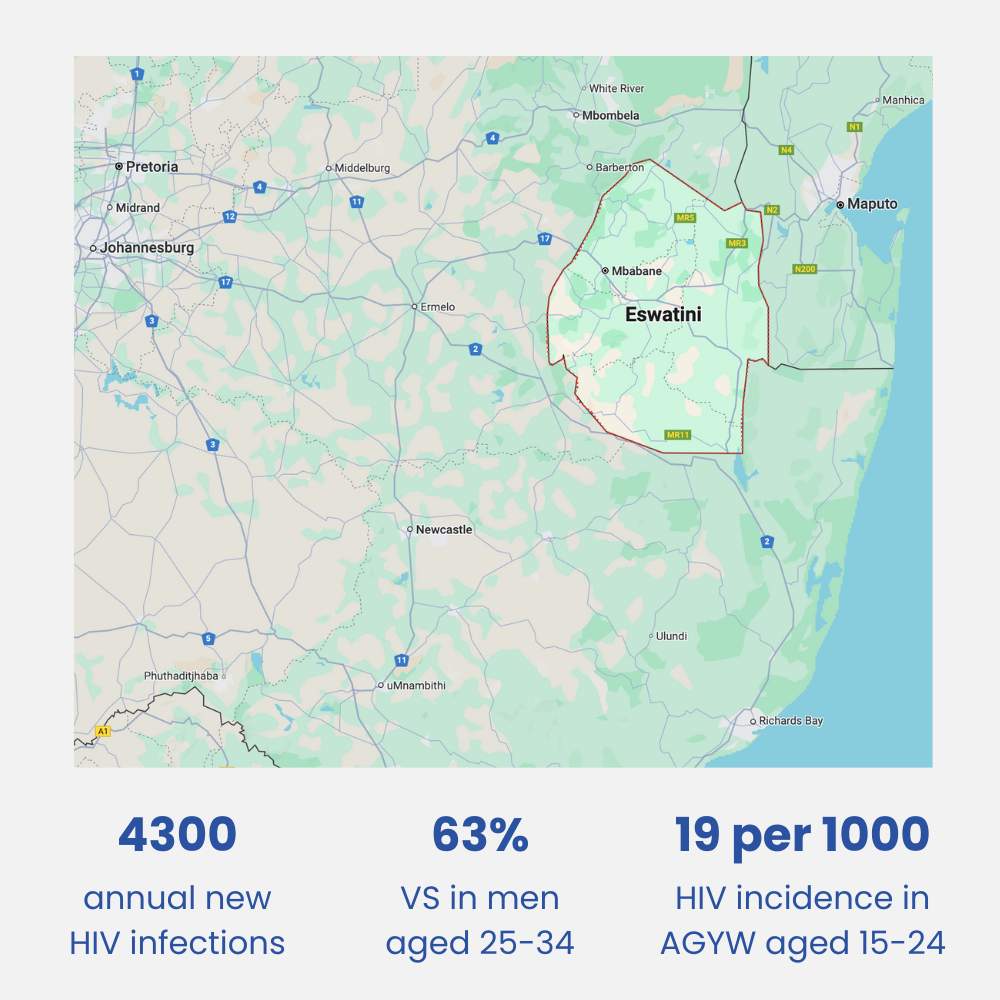Client Profile
The World Health Organization is mandated to support the Eswatini Ministry of Health with technical guidance on how to structure and prioritise the various HIV prevention and treatment components of the national HIV programme for maximal impact and cost-efficiency. Eswatini has faced one of the most severe HIV epidemics in the world.
The Challenge
Over the past 15 years, Eswatini made significant strides in addressing the HIV crisis, and in 2023, Eswatini was the first African country to achieve the UNAIDS 95-95-95 targets. Despite the above, there is still a need for further reduction in HIV incidence. In particular, adolescent girls and young women (AGYW) acquire new HIV infections at a very high rate, and gaps remain in achieving viral suppression (VS) among men aged 25-34 years. With many behavioural and biomedical HIV prevention methods available, the challenge is to provide the Eswatini Ministry of Health with guidance on the optimal combination of interventions for maximal impact.

Our Approach
Under the leadership of the World Health Organization, we joined an alliance of epidemiological modelling experts and developed a detailed model, designed to simulate how different choices in the expansion of the Eswatini national HIV prevention and treatment programme would lead to different health outcomes and budgetary consequences.
Our model tracked the past and planned rollout of Voluntary Medical Male Circumcision; Pre-Exposure Prophylaxis via oral treatment, injectables and vaginal ring; HIV prevention programmes targeted to AGYW; and interventions focused on the increased uptake of various HIV testing modalities.
We used an Approximate Bayesian Computation algorithm to fit the model to demographic, epidemiological, and programme data from Eswatini.
The Impact
Our model produced projections of the expected impact (averted HIV infections and deaths) and associated cost over the next 15 years, for multiple scenarios of the national HIV prevention and treatment programme. These projections enabled the Eswatini Ministry of Health to test and refine their programme plan, based on the best available evidence on efficacy and real-world effectiveness, budget impact, equity, cost-effectiveness and sustainability. Our epidemiological model provided a unifying framework in which many “what if” questions could be answered simultaneously in a virtual environment, thus saving precious time and financial resources, and bypassing ethical dilemmas.



